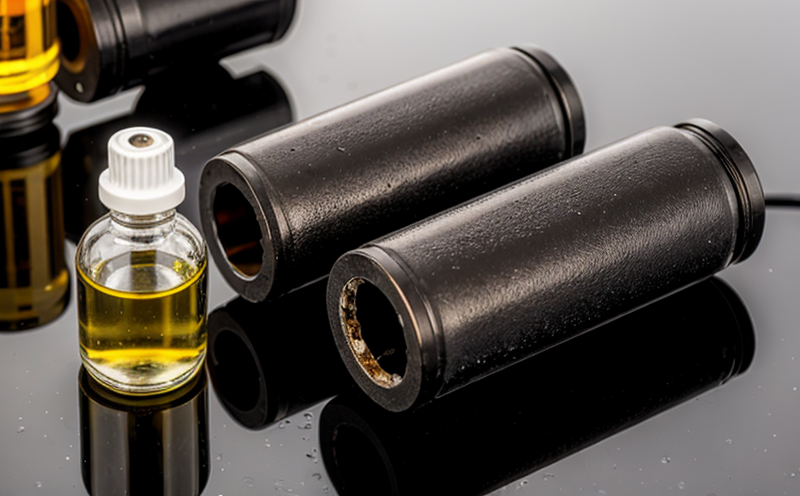EPA 8015C Hydrocarbons Extended Test in Water
The EPA 8015C Hydrocarbons Extended Test in Water is a rigorous analytical method used to determine the concentration of hydrocarbons, including those present as oil and grease, in water samples. This testing procedure is crucial for environmental monitoring, waste management, and compliance with regulatory standards set by agencies such as the Environmental Protection Agency (EPA) in the United States.
The test involves several steps, starting with the collection of an appropriate water sample. The sample must be representative of the source being tested to ensure accurate results. After collection, the sample undergoes a series of preparatory steps including filtration and extraction processes designed to isolate hydrocarbons for analysis. The extracted components are then analyzed using advanced chromatographic techniques such as gas chromatography (GC) or high-performance liquid chromatography (HPLC).
The EPA 8015C method is particularly sensitive, capable of detecting low levels of hydrocarbons in water samples. This sensitivity makes it indispensable for monitoring compliance with environmental regulations and identifying potential sources of contamination. The test results are reported as mass per liter (mg/L), providing a clear indication of the concentration of hydrocarbons present.
Understanding the parameters involved in this testing is essential for quality managers, compliance officers, R&D engineers, and procurement professionals who rely on accurate data to make informed decisions regarding water treatment processes, waste disposal strategies, and regulatory compliance. By adhering to these stringent testing procedures, organizations can ensure they are meeting environmental standards while also protecting public health.
Applied Standards:
| Standard | Description |
|---|---|
| EPA Method 8015C | Hydrocarbons Extended Test in Water using Extraction and GC/MS Analysis |
| ASTM D4265-96 (2020) | Standard Practice for Determining Oil and Grease in Water by the Soxhlet Extractor Method |
The EPA 8015C method is widely recognized and accepted across various sectors, including municipal water treatment facilities, industrial wastewater plants, and environmental consulting firms. Its comprehensive approach ensures that even trace amounts of hydrocarbons are detected, making it a vital tool in the fight against pollution.
Applied Standards
| Standard | Description |
|---|---|
| EPA Method 8015C | American Standard for the determination of hydrocarbons in water by extraction and gas chromatography/mass spectrometry (GC/MS) analysis. |
| ASTM D4265-96 (2020) | American Society for Testing Materials standard practice for determining oil and grease in water using the Soxhlet extraction method. |
The EPA 8015C Hydrocarbons Extended Test in Water is based on stringent guidelines that ensure accurate and reliable results. Compliance with these standards guarantees that the testing process adheres to best practices, thereby enhancing the credibility of the test outcomes. The use of advanced chromatographic techniques allows for precise identification and quantification of hydrocarbon compounds.
Environmental and Sustainability Contributions
- Promotes sustainable water management practices by identifying and mitigating sources of hydrocarbon contamination.
- Supports compliance with environmental regulations, ensuring that industries meet their legal obligations.
- Facilitates the reduction of environmental impact through proactive monitoring and intervention strategies.
The EPA 8015C Hydrocarbons Extended Test in Water plays a crucial role in safeguarding water resources from contamination. By detecting hydrocarbons at extremely low concentrations, this test helps prevent the spread of pollutants into aquatic ecosystems, thereby protecting biodiversity and human health. The results obtained can inform remediation efforts and help develop strategies to reduce future contamination risks.
Competitive Advantage and Market Impact
- Achieves superior accuracy in hydrocarbon detection, providing a competitive edge for businesses aiming to comply with stringent regulatory requirements.
- Enhances reputation through adherence to international standards, which is essential for maintaining trust among stakeholders.
- Facilitates the development of sustainable business practices that align with global trends towards environmental responsibility.
The EPA 8015C Hydrocarbons Extended Test in Water not only meets but exceeds industry expectations. By offering reliable and consistent results, this testing method enables companies to demonstrate their commitment to sustainability and regulatory compliance. This capability positions businesses favorably in the market, attracting customers who value environmental responsibility.





